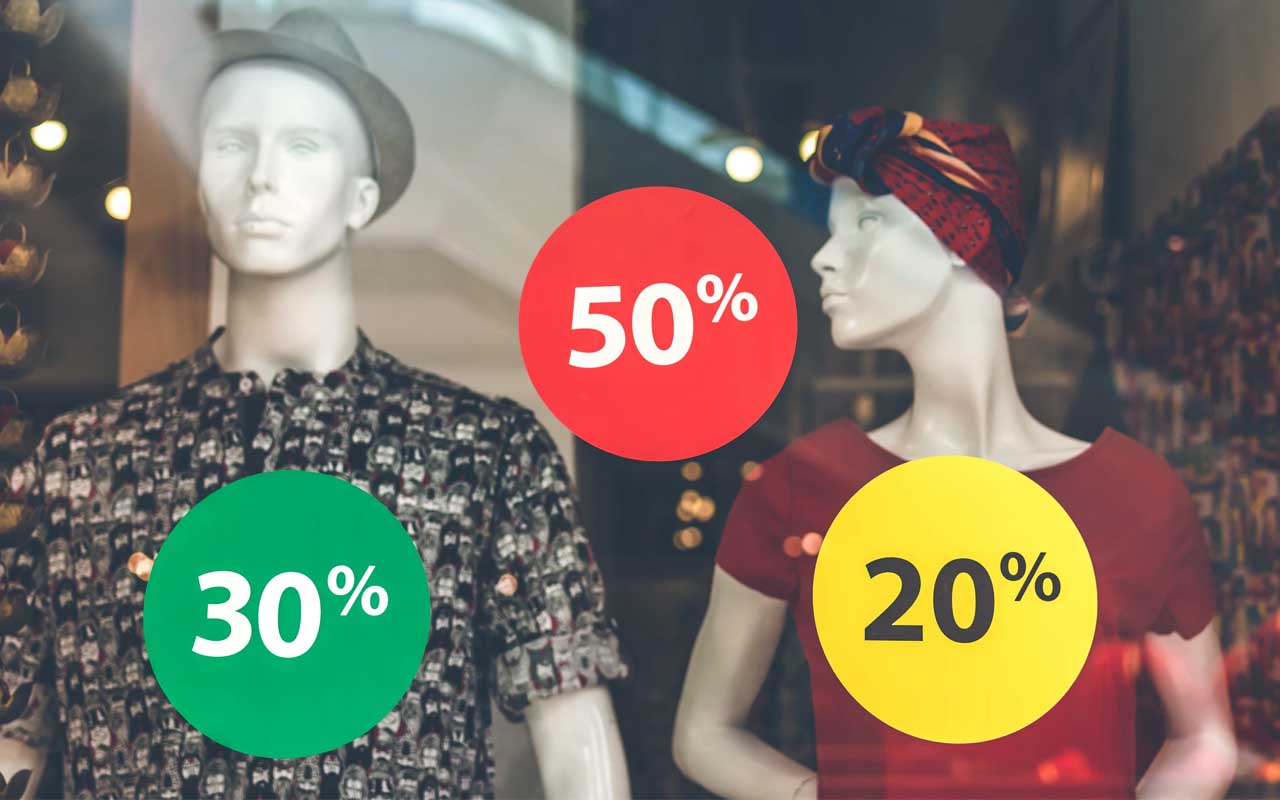The main goal of any business is to gain profit. It’s no secret. We all know it and as long as it favors both sides, we are okay with the way they conduct their business. However, there are a handful who take extra measures or find loop holes in order to maximize their profits. This not only hurts us financially, but is also a form of deceit and sometimes puts our lives at risk. So, why are big businesses spending money on research to make things appealing while reducing quality? The answer is money. Lots and lots of it. The green color encourages them to find more elusive methods that puts the poor consumer at risk. Today, we are listing some of the secrets that big businesses don’t really want you to know.
1. US-made products such as software and hardware cost more in Australia than in the US.

It’s not uncommon for big tech companies to lower prices in their home country and raise the prices in others. It is uncommon, however, to raise the price twice its original value. In 2013, a Gizmodo study found that the Adobe Creative Suite Master 6 Collection in Australia costs $4,334, whereas the same software carries a price of $2,599 in the US. That’s a price disparity of $1,735. This means that it is cheaper for an Australian to fly from Sydney to Los Angeles, purchase Adobe products and return to Australia. By doing so, they would save $601.
Besides that, Adobe subscription programs were higher than the price in the US. When the Australian government started investigating the irregularities, Adobe dropped the price to match with that in the US. According to Gizmodo: “Adobe’s concession to the Australia Tax inquiry is tantamount to a child making a promise with his fingers crossed behind his back: deceitful and immature”. (source)
2. Half of all bottled water we buy from the stores is just plain tap water.

Bottled water companies use predatory marketing practices and exorbitant lobbying efforts to sell Americans on the inaccurate belief that pre-packaged water is cleaner and safer than tap water. The bottled water industry is a profitable one which makes its makers more than $100 billion a year. According to The Independent, in some cases, publicly-sourced tap water may actually be safer since it is usually tested more frequently.
Besides China, the US consumes more bottled water than any other nation. Research shows that the stuff in a bottle is not better for you than the stuff in your tap. In fact, almost half of all bottled water is actually derived from the tap, but may be further processed or tested for safety. The bottled water in stores are plain tap water that is filtered to remove fluoride; which can cause tooth decay.
Bottled water manufacturers also use labels such as “mountain” water or “glacier” water to catch the consumers attention. Also, more water goes into making a bottle of water than simply the contents. A recent study from the International Bottled Water Association found that North American companies use 1.39 liters of water to make one liter of the bottled stuff. (source)
3. Sales aren’t always really sales. Prices are typically marked up before a sale starts in order to make a larger profit.

Most of us are bargain shoppers. We wait for a special occasion or offers to save a few bucks. But, not all retailers are as truthful as they make it appear. One way retailers get you to spend more is by holding a major sale. Before the sale begins, prices are altered to reflect the margin of profit. When the customer reads the price tag and sees that they will save more money than usual, they go for it. Of course not all retailers do this, but the ones that do often increase prices to protect their margins right before a big sale.
One way to figure out if it is in fact a sale is to ask how long a sale item has been on sale. If it’s been on the sale rack for a while, that’s a warning sign that the product was never actually sold at the original retail price. Also, before making a purchase, always check online stores and compare prices so you know if it is indeed worth spending. (source)
4. Store-bought meat is blasted with carbon monoxide to keep it red and juicy.

You’ve probably seen aisles in grocery stores filled with fresh and neatly packaged meat. One might assume that they look fresh and healthy since the stores are refrigerating them properly. Recent studies show that manufacturers are adding carbon monoxide, carbon dioxide and nitrogen, to keep the meat looking fresh and bright red for longer periods.
Studies also show that 70% of the entire meat sold within the US is exposed to carbon monoxide through a process known as modified atmosphere packaging or MAP, that keeps it looking fresh for up to three weeks. The redness doesn’t necessarily indicate its freshness and this is misleading consumers who are unaware of the practice. Untreated meat turns gray within a day or two while those exposed to carbon monoxide can stay red and fresh for weeks. Even when the exposed ones are left outside, they show no signs of decay for up to eight days.
The gas packaging has been approved by both the FDA and USDA and the North American Meat Institute says it has been used safely in meat products for many years. (source)
5. Printer ink cartridges are meant to signal that they’re empty after a certain number of pages, even if they still have some ink left.

Printers are fairly cheap to buy whereas the toners or ink cartridges come with a high price tag. Printer manufacturers rely on consumers to buy the cartridges to maximize profit. In order to encourage them, many manufacturers purposely include sensors or software that predicts when the printer will run out of ink. Often times, the printer guesses it wrong and it reports to the consumer that the cartridge is low and needs to be replaced. This is a classic razor-and-blades business model, that provides manufacturers with a huge incentive with each replacement. (source)
6. A lot of cable networks speed up shows or cut scenes to fit in more commercials.

The saying, “Time is money”, is true when it comes to cable TV networks. In 2015, actress Courtney Cox, who starred in the series “Friends”, while watching TV, noticed that her voice sounded different while her movements were faster. It was later discovered that the frame rates on the video files were increased several times in order to squeeze in one or two more ads to maximize profit. Just two minutes of commercials can add more than $68,000 in revenue for local TV networks. So, they speed up videos by changing frame rates without making major differences that may give the viewer any hint of what is going on. (source)
7. In sofa/couch commercials they use smaller actors/models to make the sofas/couches look bigger. Retailers also use distorted mirrors to make shoppers appear thinner, knowing that most people will buy clothing if they like the way they look in it.

Businesses have to find innovative ways to make their products more appealing to the customers. One of the oldest tricks in the books is to use smaller actors or models when taking pictures of products. This enhances the product and gives it a bigger appearance while tricking the consumer.
Another secret that retailers use in dressing rooms to make you spend money is by installing distorted mirrors. Almost all stores are equipped with these mirrors that makes a shopper appear thin and appealing; encouraging them to make a purchase. Some stores will tilt the mirror to create a longer and leaner reflection, or use dim lighting to make you appear tanner, which also improves your appearance. (source)
8. Most electronics manufacturers embed planned obsolescence, forcing their customers to upgrade.

Planned obsolescence is a strategy by manufacturers that ensures that a specific product becomes outdated or useless within a certain period of time. This guarantees that consumers have no other choice but to either buy a new one or to pay to have an upgrade. This can be achieved by purposely embedding codes with an update, which forces your phone or computer to process information at a longer rate. Currently, France is the only country in the world where planned obsolescence is illegal.
In 2017, Apple admitted to slowing down phones to encourage people to spend money on their latest products. This was achieved without the consent of the consumer and not everyone was happy about it. The company faced hundreds of thousands of lawsuits by angry consumers who noticed that whenever a newer iPhone was about to be released, their phones started acting up or shutting down. (source)
9. Sales associates push store credit cards to shoppers because they often receive incentives for each member they sign up. Shoppers are also more likely to spend more when swiping a store card.

You’ve probably been asked by sales associates if you’re a rewards member or if you wish to enroll in a store card, which gives you a $50 credit. This is a tactic used by big retailers to trick shoppers into spending more on their products. Also, sales associates get incentives for each member they sign up. Since retail credit cards generally offer a one-time discount of 10 to 20 percent, shoppers are more likely to buy more in that single transaction to maximize that one-time savings.
However, these store cards come with extremely high APRs, retroactive interest and limited rewards, not to mention late fees and penalties for non-payment. Instead of a store credit card, your best bet might be a cash-back credit card or some other type of rewards card. (source)
10. Pharmaceutical companies make payments to doctors to influence the type of medication they prescribe us with.

Money is a driving factor to most of our actions. This is why pharmaceutical companies spend billions of dollars every year on advertising as well as influencing physicians to recommend their product. Pharma companies influence doctors to change their prescribing habits and prescribe a particular set of products. Instead of spending more on research and development of new medicine, they spend double the amount on marketing to doctors.
Sales representatives visit individual doctors to tell them about their products. Within 10-15 minutes, the representative will brief the doctor as well as provide him/her with a gift not exceeding $100 in value. The representative will revisit every once in a while with gifts as well as any new information regarding their product. In return, the doctor will encourage his/her patients to try out the new medicine that is showing “promising” results. (source)




